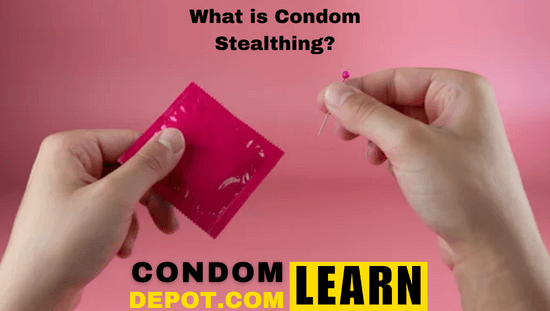Learn

Q: What's in My Lube?
There can be a lot of crazy crap in your personal lubricant. We’ve compiled a glossary of lube ingredients that we see over and over again. Now let's answer one of our most frequently asked questions: What's in my lube?
Use the CTL+F (COM+F on Mac) function to find the ingredient you’re looking for. If you don’t find something, let us know! This list is not yet comprehensive to all the ingredients in all of the lubes we carry, but we’re working on it.
Remember, when we refer to something as toxic or non-toxic, the levels can vary. Low levels of toxicity may mean that some people have had allergic reactions to that ingredient. With the exception of products with nonoxynol-9, all of the ingredients in our lubricants are considered safe by the FDA at the levels that they are presented as in these lubricants.
| Related Articles:
• Condom Depot's Guide To Personal Lubricants
• Top Ten Alternative Uses for Lube
Lube Ingredient Glossary
Acacia Senegal Gum: (also known as gum arabic) A form of hardened sap from the acacia tree. It is sometimes added to food, inks, and paints as an emulsifier. This means that it keeps ingredients of different densities from separating out when the lube has been sitting too long (like oil sitting in water). Acacia senegal gum is considered safe and is even added to many different types of food, especially soft drinks.
Aloe Vera: Sometimes it's labeled as aloe barbadensis, but as far as I could figure out, they are synonymous. Aloe vera is a plant that is typically used as a cooling or pain relief gel. It is seen in a number of lubes because it can have a cooling effect, and, in particular, is found in anal lubes as an alternative to benzocaine. Aloe vera is considered to be very vagina-friendly, and is reputed to even help balance vaginal flora and prevent infections.
Benzocaine: A local anesthetic used to give the lubes a slight numbing sensation. It absorbs more slowly than lidocaine, and doesn't last quite as long. A very small amount of people have reported having an allergy to benzocaine, but because the two are so structurally different on a molecular level, those who do have a benzocaine allergy won't have a reaction to lidocaine. Otherwise, they are both considered body-safe and are found in many ointments for pain relief.
Benzoic Acid: I have seen some information that seems to imply that benzoic acid and methylparaben are the same thing. I don’t know if this is true-- it was only one source that said it-- but both are preservatives.
Benzyl Alcohol: A naturally-occuring solvent that is used as a preservative. It is common to have allergic reactions to benzyl alcohol, especially topical reactions like dermatitis.
Capsaicin: A chemical found in chilies that can also be synthetically created. Capsaicin is often found in warming lubes. The amount of capsaicin in warming lubes is nowhere similar to that of a jalapeno, although it can be daunting to put capsaicin down there. If you’d prefer something gentler, check out warming lubes made with honey instead.
Carrageenan: A thickening gel, which is obtained from seaweed. This is considered a good vegan/vegetarian alternative to gelatin, and is even organic-approved. Supposedly, it also can slow the infection rate of HSV, HPV, and HIV, but don’t use it solely for that purpose! The best way to prevent those diseases from spreading is by being tested regularly and wearing a condom.
Cellulose Gum: (also called Carboxymethylcellulose) A thickening agent that is considered to be hypoallergenic and non-toxic.
Citric Acid: A weak organic acid.
Cyclomethicone: An emollient in silicone that is used to prevent the lube from becoming tacky. It is also present in most deodorants and used for the same purpose. It is not toxic to humans, but there is some concern that it can have a negative effect on the environment. Tests are on-going.
Cyclopentasiloxane: A silicone-compound most commonly found in silicone-based lubes. In very large doses, it can be toxic or a carcinogen, but in the tiny amounts present in lubricants, it is deemed to be safe.
Damiana Leaf: A shrub used by Mayans as a potent aphrodisiac, which is still used in modern Mexico for sexual arousal and increased circulation to the genital areas.
Deionized water: Water without ions. About as close to pure H2O as you can feasibly get. Sometimes, it can be labeled as distilled water, or just water.
Diazolidinyl urea: A preservative synthesized from allantonin and formaldehyde. Can cause dermatitis as an allergic reaction.
Dimethiconol: A silicone-based polymer. It is used as a skin-conditioner and to increase viscosity in silicone-based lubes. It is considered to be very safe, with no reports of toxicity.
Dimethicone: (also known as PEG 8) Another form of silicone. This one helps keep products soft and silky-feeling. The FDA has declared it safe to use, and it is even recommended for people with light dermatitis on the hands.
Disodium EDTA: A preservative, often found in skin-care products. It is considered to be non-toxic, non-irritating, and non-carcinogenic.
Ethoxydiglycol: (also known as Diethylene Glycol Monoethyl Ether) A solvent used to thin products and increase viscosity. It's found in a lot of personal care products, including make-up, bath soaps, and skin-care products. It does have ether in it, which is considered a carcinogen, and can cause some people to have allergic reactions.
Fragrance: A compound of some kind which has been added to enhance the smell of the lube. Fragrances do not belong in the sensitive mucous membranes such as those in the vaginal canal. They can cause irritation, particularly to people with sensitive skin.
Ginger Root: A herb which is thought to stimulate the circulatory system, increasing blood flow to the genitalia.
Gingko Biloba: An ancient Chinese herb used for an increase in cognitive awareness and sex drive. Some say it is particularly helpful for those with depression-based erectile dysfunction.
Gluconolactone: Considered to be a skin-conditioner, this chemical is used to keep skin healthy and keep the lube from getting clumpy. It is not known to have any adverse reactions in humans, and is used in a lot of organic and all-natural skin care products.
Glycerin: Glycerin is non-toxic and can help keep a water-based lube slippery and tasting sweet. But it can sometimes cause yeast infections – it doesn’t contain sugar, but it can be converted to sugar while in the vagina. Not every woman experiences this sensitivity, and sometimes, it can come and go. If you find that you commonly get yeast infections from lube, this may be the culprit.
Honey (miel): Believe it or not, honey-based lubricants are a thing! Honey is commonly used in warming lubricants as a warming agent, and are only meant for external play, which means that this lube should be kept to penises instead of vaginas.
Hydropropyltrimonium Chloride: A water-soluble organic compound from guar gum. Used most often in lubes as a thickening agent.
Hydroxyethylcellulose: This is a thickening agent found in a lot of K-Y products. It is found in many cosmetic items, especially hair gel, and is considered non-toxic.
Hydroxypropyl Guar: A viscosity increasing agent, an ether of propylene glycol. It is considered to have a very low level of toxicity and should not pose any risk. It is also found in many makeup and hair care products.
Lidocaine: Lidocaine is a topical anesthetic, like benzocaine. The job of this ingredient in lubes is to numb the genitals or anus very slightly, either to prevent pain or climax. Lidocaine absorbs very quickly and lasts longer than benzocaine. Both ingredients are considered very body-safe.
Maltodextrin: Maltodextrin is a thickening agent. It’s harmless and often found in foods-- particularly beer and peanut butter. It can sometimes be sweet or tasteless and the sweetness should not affect the vagina. It’s also considered a gluten-free sweetener.
Menthol: Menthol is a compound obtained organically from certain types of mint, or made synthetically. It is usually found in cooling or tingling lubes. It isn’t toxic to humans in such small doses, but it can sometimes be an irritant to the sensitive mucous membranes on the vagina.
Menthyl Lactate: This is a cooling agent, much like menthol. Menthyl lactate is derived from peppermint oil and is considered a safe alternative to menthol, although it can sometimes cause skin irritation.
Methylchloroisothiazolinone: A preservative which prevents the growth of bacteria, yeast, and fungi. It is known to be an irritant in higher dosages. In the United States, it is considered to be safe at the amount found in lubricants.
Methylisothiazolinone: A preservative, often used in conjunction with methylchloroisothiazolinone, and like it, is often allergenic although it is considered safe.
Methylparaben: Many safe-sex educators and skin-care professionals do not recommend any sorts of parabens. There is some evidence that leads us to believe that parabens in the amount that they are found in many cosmetics and lubricants can lead to tumors. Some people have also had allergic reactions to it. Methylparaben is found naturally in many fruits where it acts as an antimicrobial agent.
Methyl Salicylate: This is another cooling agent, also known as oil of wintergreen. It is considered toxic to people in high doses, although it is found in a lot of pain relief lotions and rubs, so the tiny amount that is in a lubricant will do no harm, even if you ingest it. Note that this is called, ‘oil of wintergreen.’ I cannot find any evidence that it isn’t condom safe, but my guess is that since it’s in such a small amount, it shouldn’t hurt your latex or polyisoprene condoms.
Muira Puama: A part of traditional medicine in Brazil, this plant supposedly increases testosterone levelsand decreases PMS and menstrual symptoms.
Nonoxynol-9: Nonoxynol-9 is a spermicide and can cause severe irritation and even increase the likelihood of spreading STDs, including HIV. We do not recommend using it.
Passion Flower: This aphrodisiac from the Amazon lives up to its name, as it is said to create a heightened libido, while also having a calming effect on the mind.
Phenyl Trimethicone: Another form of silicone, this compound is used to prevent foaming and makes a barrier against the skin that prevents the skin from being dehydrated from using the product. This is considered a very safe form of silicone.
Polysorbate 20: This is an emulsifier, but it is also used to improve the spreading feeling of mint in some products. It is labeled as non-toxic.
Potassium Acesulfame: A calorie and sugar-free sweetener. There is some fear that it may be a carcinogen, much like aspartame, but the tests that have been run on it have been insufficient.
Potassium Sorbate: A preservative. Usually made synthetically but it can be found in some berries. Large amounts can be an irritant, but lubricants usually have a very tiny amount.
Propanediol: One of three different chemicals, in most cases, this is just another name for propylene glycol.
Propylene Glycol: This is used as an emulsification agent in a lot of lubes, which means it helps the ingredients blend together, and can even work as a moisturizer in lubricants. It has a very low toxic rating, but some people still have reactions to it.
Safflower: Used in traditional Chinese medicine to alleviate pain, increase circulation and prevent bruising, this flower extract has been used in cosmetics since ancient Egyptian times.
Sclerotium Gum: A viscosity agent which thickens the lube so that it doesn't feel too wet or runny. In cosmetics, it can be used to leave the skin feeling soft or silky smooth. It is considered to be safe, with no adverse side-effects present in studies.
Sodium Benzoate: A preservative. It’s not known to be toxic or have any adverse reaction to humans, although in massive quantities, it’s thought to be responsible for hyperactive behavior when ingested. In a lubricant, it should have no effect.
Sodium Chloride (Salt): A thickener found naturally in seawater.
Sodium Hyaluronate: A sodium salt that helps skin look/feel younger, sometimes called the ultimate skin moisturizer. It’s found in the skin naturally but can deplete over time, which is why skin seems to get drier, more wrinkled with age. It’s not known as an irritant to skin but can leave skin feeling greasy. Often found in anti-aging lotions.
Sodium Hydroxide: Also known as lye or caustic soda, this is used as an antimicrobial most often in soap, but it can be irritating to the mucous membranes in a vagina.
Sodium Saccharin: An artificial sweetener. There is some data that says these can lead to yeast infections for those who are already prone to them, and some people can have an allergic reaction. But it's present in other foods, like canned fruit, diet sodas, and candy, so if you haven't had an allergic reaction to these foods before, you're probably safe to ingest it. Just keep it away from any sensitive mucous membranes if you're prone to yeast.
Sorbic Acid: Another organic preservative.
Sucralose: Sucralose is an artificial sweetener. It is considered vagina-safe.
Tocopheryl Acetate: Also known as vitamin E acetate. This vitamin provides antioxidant benefits to the skin it’s applied to, and it can work as a preservative to products that have a low acidity, like some lubricants. Some people, particularly those with sensitive skin conditions like eczema, have found that they will have reactions to vitamin E acetate, mostly just irritation and very rarely, blistering or hives.
Xanthan Gum (Corn Sugar Gum): A food-thickening agent used in salad dressings and gluten-free baking.
Xylitol: Another vagina-safe sweetener. This sugar alcohol has about the same sweetness as sucrose and has no levels of toxicity to humans. However, it can be very dangerous to dogs, so don’t leave lubes containing this out where Fido can get ahold of it.














